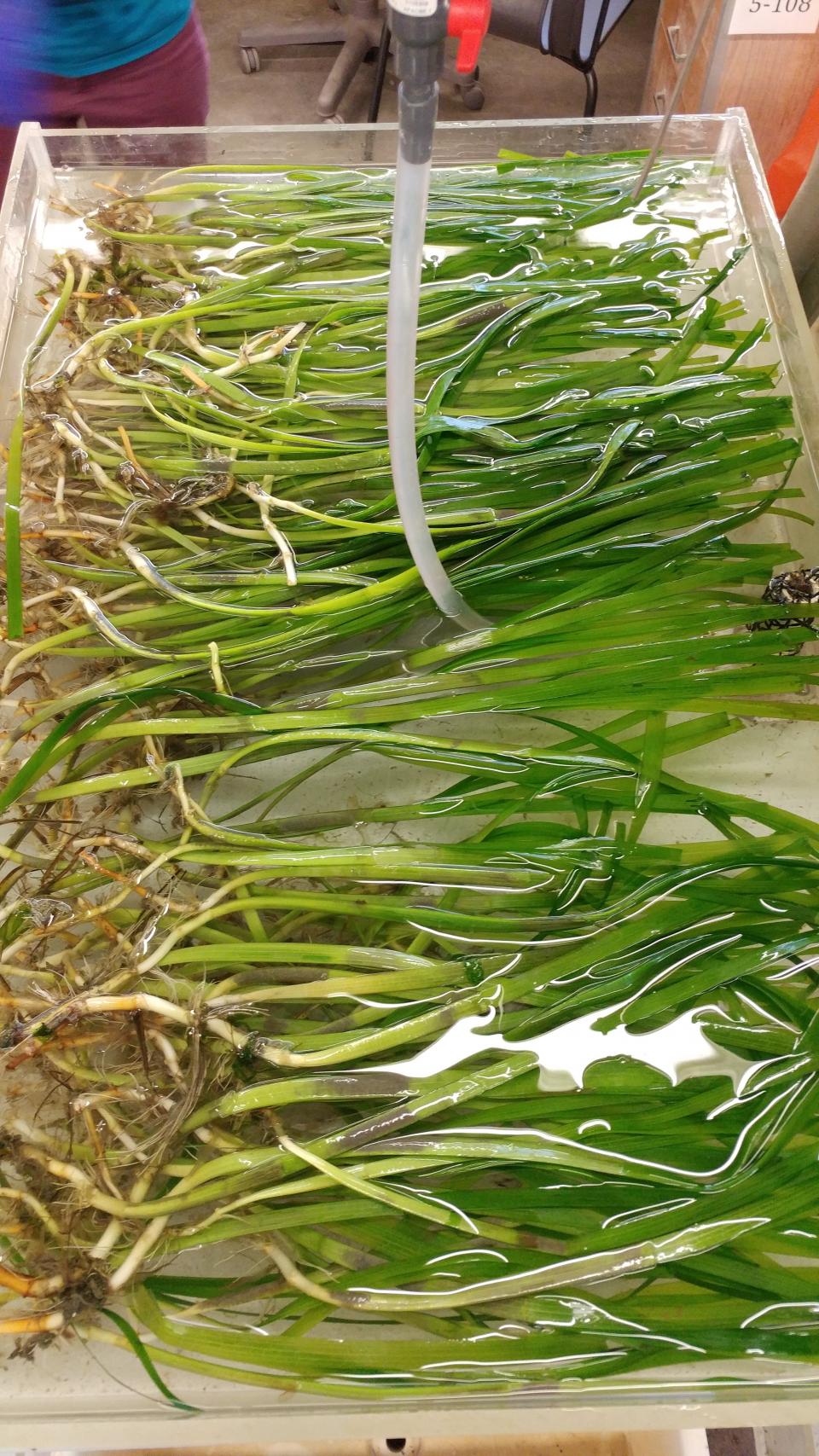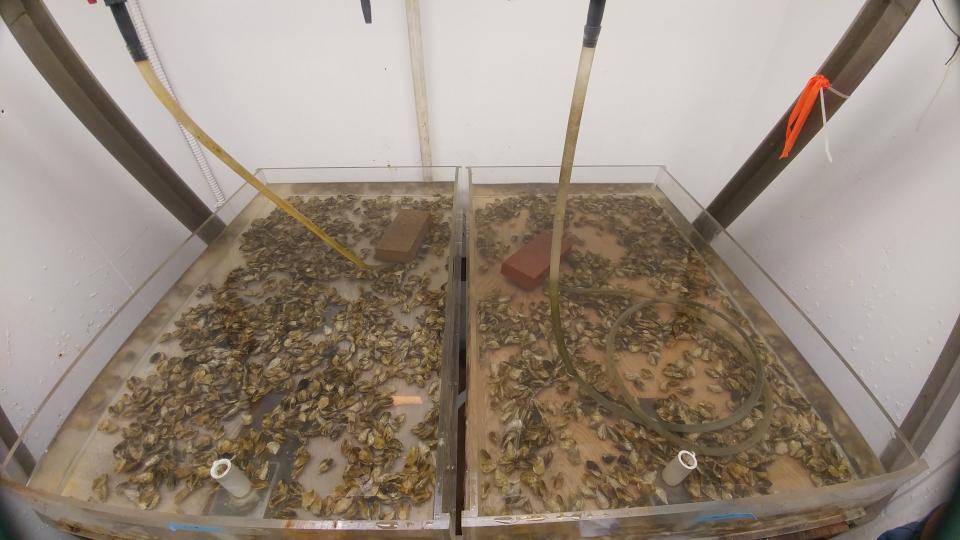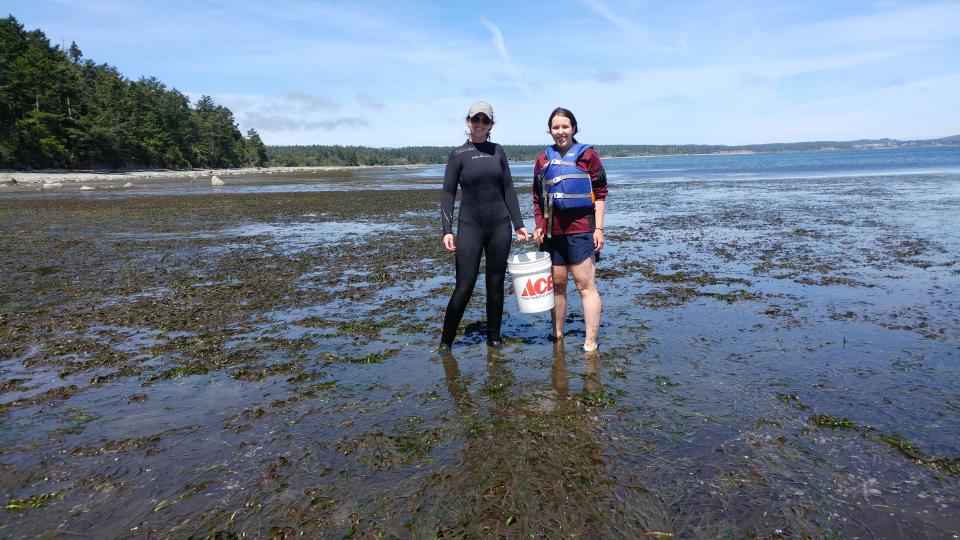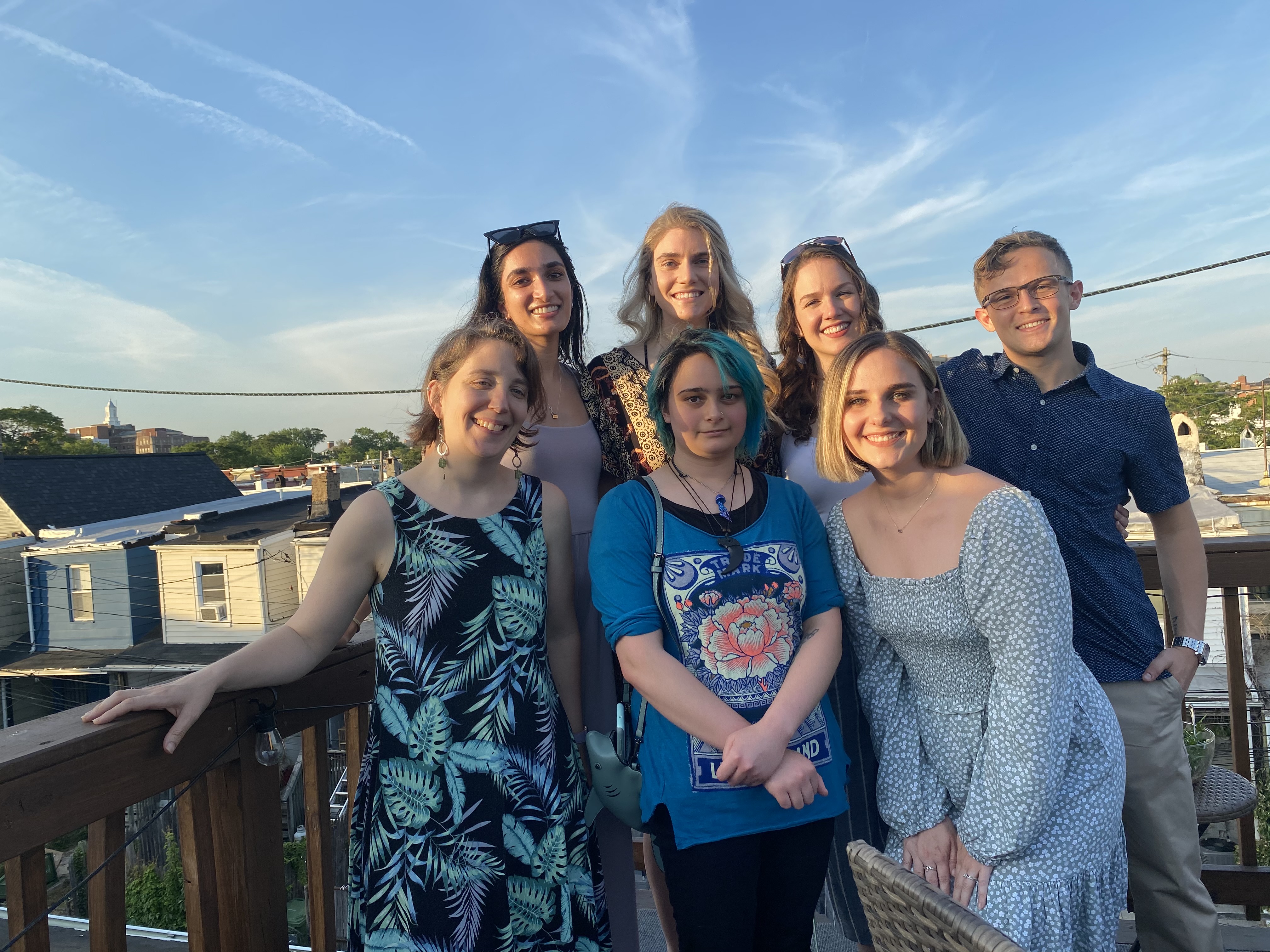
In the 1930s, more than 90% of the seagrasses on the North Atlantic coast died from wasting disease. The culprit was Labyrinthula zosterae, a slime mold protist that researchers often call simply “Laby.” While we haven’t seen a die-off event of that scale since, Laby is still considered a threat and causes seagrass mortality every year. Tori Agnew, a PhD student at IMET, is researching ways to reduce its impact on seagrasses and help oyster farmers (and consumers) in the process. Tori began her studies in the lab of Dr. Colleen Burge, who recently began working for California Fish and Wildlife, and has recently transitioned to working with Dr. Harold Schreier.
To understand Tori’s project, it is helpful to know a few things about seagrasses and oysters. Seagrasses are very important to estuaries, including the Chesapeake Bay, where IMET is located, and to the San Juan Islands in the Pacific Northwest where she conducted fieldwork. Seagrasses protect shorelines by stabilizing sediment, improve water quality by trapping fine particles, and provide habitat for small creatures. They also sequester carbon and buffer pH, helping to mitigate the effects of climate change and ocean acidification. To protect this valuable natural resource, states have created protections, including preventing oyster farming in seagrass beds – though Tori’s research questions whether that is the most beneficial policy.

Oysters are another valuable natural resource in estuaries. As filter feeders, they can trap nutrients and sediments, cleaning and clarifying the water. With clearer water, seagrasses are able to photosynthesize and grow more effectively. Many scientists work on understanding various aspects of the interactions between seagrasses and oysters. Tori specifically focuses on the potential for oysters to filter out Labyrinthula zosterae and thus protect seagrasses from experiencing a die-off event like that seen in the 1930s.

Tori has broad career interests and is looking forward to exploring different options in science research and environmental policy after earning her PhD. This project has prepared her well for both, as she has conducted a rigorous research project with significant policy implications; if it can be proved that oyster aquaculture protects seagrass from disease, then that may open doors for co-management of the species. She has been given a window into the challenges and complexities of coastal management and is curious about working in that field.

A strong sense of curiosity is what led Tori to IMET and this project in the first place. Growing up in upstate New York, she initially wanted to become an aquatic veterinarian, though she can’t say exactly why. “I didn’t grow up on the coast, so I don’t really have beach stories that inspired me to become a marine biologist. I think it was really just something that I didn’t know a lot about and so I wanted to learn more.” That led to a degree in marine biology and after working in a research lab and completing an undergraduate thesis on diseases in bivalves, she wanted to keep learning. She has followed her curiosity and will keep doing so as she makes plans for the future.

Posted: August 24, 2021, 4:37 PM